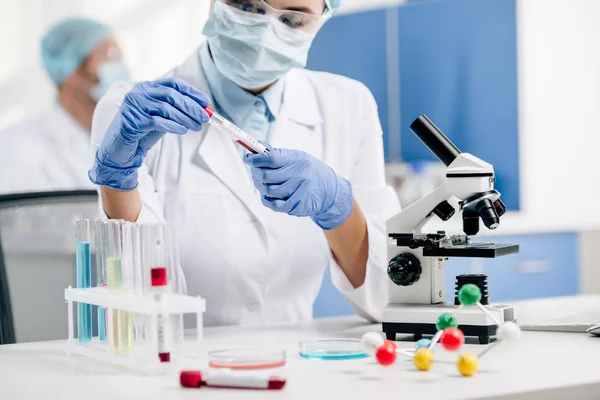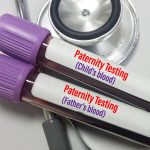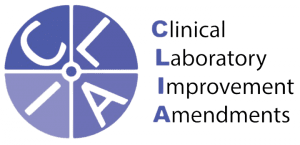Forensic DNA testing has helped solve many crimes and catch criminals, and can even help to free the wrongfully convicted. Still a relatively new invention, DNA testing has multiple variations of tests that can be conducted depending on what you are looking for in the results.
How Does DNA Testing Work?
DNA is found in blood, semen, saliva, urine, feces, hair, teeth, bone, tissues, and cells. If any of these biological materials are found at a crime scene, they are collected by a forensic DNA analyst. In a complex process using advanced science and machinery, the DNA is extracted from the cell to be analyzed and tested. For forensic DNA testing, there are three main tests performed to identify a person from a crime scene.
Y-STR: This type is only found on the Y Chromosome in males. This test is useful when it comes to investigating sexual assault evidence or if there is more than one perpetrator to the crime.
Mini-STR: DNA at crime scenes can be minimal or tampered with. This testing system takes a smaller sample and magnifies it so that it can be utilized, helping to solve a lot of cold cases.
Forensic Paternity: This type of test is helpful for crimes like rape or incest. It can also help identify missing persons through family members who are available to be tested through reference samples like a mouth swab.
Quality Forensic DNA Testing
Forensic DNA testing can also be used to expunge someone of a wrongfully convicted crime. There are ways of proving innocence post conviction, like if forensic DNA testing results show that there are no traces of your DNA at the crime scene.
Over the last several decades, the use of DNA proof in criminal inquiries and court proceedings has grown in importance. Thanks to improvements in DNA testing, detectives may now identify possible culprits or rule out innocent persons from suspicion using tiny quantities of biological evidence. Genetic proof has occasionally been utilized to clear people unfairly convicted of crimes. DNA testing may offer those who have been wrongfully charged or accused of committing offenses the proof they require to redeem their reputations.
Can You Be Framed By Your Own DNA?
Although DNA evidence is an effective tool, many have questioned whether it is sufficient on its own for accusing somebody of committing an offense. Rarely have innocent people been wrongly accused using DNA evidence. Several things can lead to this:
- Interference with and contamination of forensics samples: DNA from one source may contaminate DNA from another if evidence collected from the crime scene is incorrectly gathered or preserved. This might lead to a not-guilty individual’s DNA being recovered at an incident site. Such muddles are intended to be avoided by following proper protocols for gathering and managing evidence.
- Laboratory faults or Human Errors: Very seldom, flaws in the DNA testing procedure or incorrect interpretation of the data may lead to a false match between a DNA sample and the incorrect individual. To prevent these kinds of mistakes, accredited labs adhere to strict regulations.
- Comparable siblings: It is conceivable for identical twins or triplets to have the same genetic makeup. Therefore, a DNA match fails to offer a clear picture of the offender. Conviction needs to depend on more proof and background information.
- Conflicts involving genealogy matching – Through partial matches, submitted DNA from relatives who have profiles on genealogical networks has been utilized to determine suspects. However, some contend that this violates the confidentiality of innocent family members.
How Does DNA Help Solve Crimes?
 The use of DNA profiling has emerged as a critical technique for assigning perpetrators to crime sites and proving connections between seemingly unconnected events. This is how it aids in the investigation of crimes:
The use of DNA profiling has emerged as a critical technique for assigning perpetrators to crime sites and proving connections between seemingly unconnected events. This is how it aids in the investigation of crimes:
DNA samples obtained from suspects can be matched to genetic data found at the sites of crimes, such as cells from the skin, hair, sweat, or blood. The perpetrator may be located at the crime site using matches. Secondly, crime can be linked using updated online registries or databases. DNA evidence submitted into regional, state, or federal databases might establish a connection between serial crimes by identifying matched criminals. As a result, detectives may work together and exchange leads.
Unidentified Remains: By comparing a sample of DNA with that of a family member, DNA can be utilized to recognize the remains of individuals who have gone missing. Families of those who went missing now have closure.
Releasing the wrongfully accused by demonstrating a defendant’s innocence, DNA testing following a conviction has been able to reverse several wrongfully convicted individuals. When locating offenders in the exact moment and location of criminal behavior, trustworthy DNA analysis offers objective proof that is hard to dispute. With advancements in testing abilities, even tiny DNA fragments can yield crucial bits of evidence that help solve murders.
How Does DNA Profiling Work?
The process of analyzing particular genome areas that vary significantly among people is known as genetic profiling or DNA fingerprinting. These are the fundamental actions:
Take a sample and separate the DNA from it. From a crime scene sample, scientists only require a very small amount of DNA, roughly 100 micrograms to create a DNA profile. That is relatively small; a few salivary cells on a straw would suffice.Unlock the Secrets of Your DNA with Our Testing Services

Enhance the areas that are indicative. Scientists replicate the distinctive DNA sections of the sample millions of times using a potent method known as Polymerase Chain Reaction (PCR). They specifically target areas known as Short Tandem Repeats, or STRs, which are made up of little DNA segments repeatedly repeated in a row and only four or five nucleotides long.
Determine how many times. To differentiate all DNA copies from a particular area from the rest in the mixture, fluorescent dyes are applied to every STR copy created during PCR one kind of dye for each STR region.
Seek out an ideal match. To be found guilty, a suspect must have STR repetitions in each of the 13 STR regions that match those in the crime scene sample. The FBI claims that if all 13 STR sites match precisely, you can almost certainly identify your perpetrator; the likelihood of identifying the incorrect individual is one in a billion. However, a lone STR mismatch is sufficient to clear a suspect.
Conclusion
Evidence based on DNA has made it possible for juries, judges, and detectives to get objective scientific data on criminal activities. As DNA testing procedures advance, justice may be done fairly and impartially. DNA evidence symbolizes the absolute truth in the quest for justice, even if no system is perfect. Businesses such as ChoiceDNA enable people to take charge of their genetic makeup by offering easily accessible public genetic testing. DNA analysis provides hope to people wrongfully accused by presenting irrefutable scientific evidence.



















